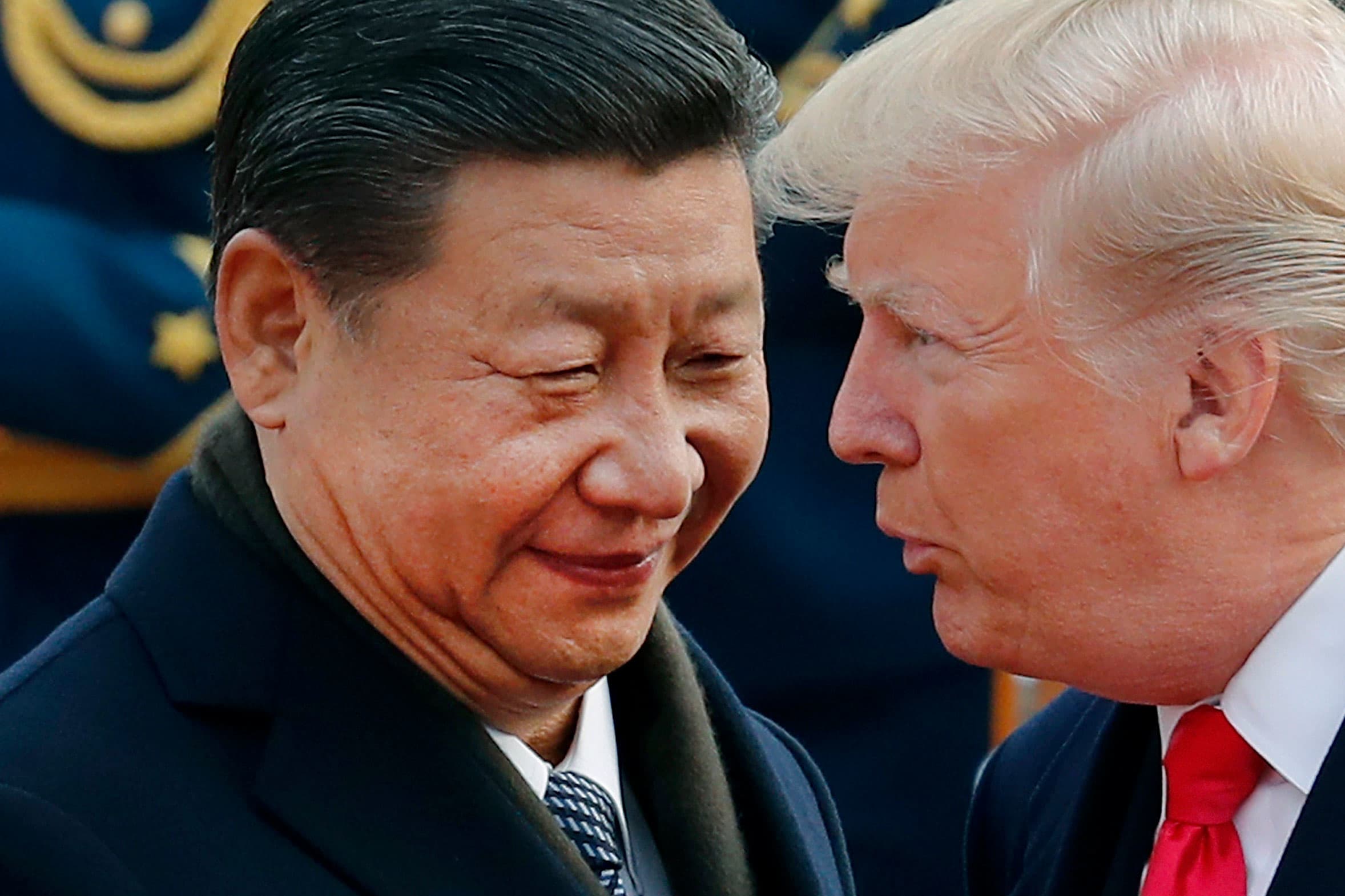
OSAKA, Japan—Chinese President Xi Jinping plans to present President Trump with a set of terms the U.S. should meet before Beijing is ready to settle a market-rattling trade confrontation, raising questions of whether the two leaders will agree to relaunch talks.
Among the preconditions, said Chinese officials with knowledge of the plan, Beijing is insisting that the U.S. remove its ban on the sale of U.S. technology to Chinese telecommunications giant Huawei Technologies Co. Beijing also wants the U.S. to lift all punitive tariffs and drop efforts to get China to buy even more U.S. exports than Beijing said it would when the two leaders last met in December.
The U.S. chief trade negotiator, Robert Lighthizer, and his Chinese counterpart, Liu He, talked by telephone this week on ways to get the talks back on track and expect to meet in person in advance of the presidents’ Saturday lunch meeting after a Group of 20 summit in Osaka, said people familiar with the discussions. It is far from clear what the two will manage—and whether their bosses will approve their work.
Despite his preconditions, Mr. Xi isn’t expected to take a confrontational tone with Mr. Trump, according to the Chinese officials. Rather, they say, he will sketch out what he envisions as an optimal bilateral relationship, which includes China’s help on security issues vexing to the U.S., especially Iran and North Korea.
For their part, U.S. officials say they are going into the meeting looking to see whether their Chinese counterparts are willing to pick up negotiations from where they broke off. According to U.S. and Chinese officials, the two nations were close to a trade deal in April when, in the U.S. view, China reneged on provisions. It is up to Beijing, U.S. officials feel, to get the talks back on track.
“So we went in and we thought we had a deal, and we went in and then they said, ‘You know, we’re not going to give you certain things that we agreed on,’” President Trump told Fox Business Network on Wednesday. Unless China gets the talks back on track, Mr. Trump said, he was ready to go ahead with what he called “Phase 2”—assessing levies on the remaining $300 billion in Chinese imports not currently hit with tariffs. He said he could start with 10% tariffs on items including such consumer mainstays as clothing, mobile phones and laptop computers.
That was the tactic Mr. Trump used with the last $200 billion of goods—starting at 10% to put pressure on Beijing without significantly disrupting the U.S. economy, and then shifting to 25% when he felt China was backsliding.
Some corporate lobbyists are hoping that talks produce a plan to finish negotiations by a specific deadline. That way, the two sides will be under pressure to deliver—and President Trump would presumably refrain from moving ahead with tariffs during that time period.
The Chinese leader isn’t expected to make big concessions at his meeting with Mr. Trump. That is because he is facing increased political pressure on the home front to stand firm against Washington, which is seen among elite Chinese political circles as unfairly accusing China of a range of misdeeds, from violating intellectual-property protection, improperly subsidizing state-owned enterprises and spying on U.S. firms.
“The Chinese side hopes to set a tone for the relationship going forward,” said a person briefed on China’s plans in Beijing.
Mr. Xi is expected to find a tough audience in Mr. Trump, who continues to vow to raise tariffs and is counting on his hard-nosed stance on China to be a political plus during his re-election bid. “The incentives not to do a deal are getting stronger,” said Hudson Institute China scholar Michael Pillsbury, who consults with the White House. With a deal “either Xi or Trump would suffer criticism. That wouldn’t have happened six months ago,” said Mr. Pillsbury.
A trade cease-fire, if reached, could give the two sides momentum and a possible path to rapprochement on a number of other tense fronts, from disputes over China’s expansive hold on the South China Sea to the U.S. campaign against Chinese technology firms over security concerns, which in recent days has expanded to include more Chinese companies in addition to Huawei, the world’s largest telecommunications gear-maker.
U.S. negotiators have tried to keep the Huawei issue separate from the trade talks, though Mr. Trump has several times talked of packaging Huawei in a trade deal. A Chinese Commerce Ministry spokesman, at a regular briefing in Beijing on Thursday, urged the U.S. “to immediately rescind the suppression and sanction measures against Huawei and other Chinese enterprises.”
As part of a deal, Beijing is seeking the removal of all additional tariffs imposed by the U.S. since early last year—25% levies on $250 billion in Chinese imports. Beijing also has said U.S. demands for Chinese purchases of American goods should be “reasonable”—meaning, according to Chinese officials, they must be based on domestic Chinese demand, rather that requiring China to divert purchases it now make from other countries.
Some Chinese government advisers have said that U.S. negotiators raised the purchasing target to an additional $300 billion a year in exports from current levels. In talks last December, the discussed figure was $200 billion. Even hitting that $200 billion number would be unlikely. It would require more than doubling of U.S. exports to China, which were $120.1 billion in 2018 and $129.8 billion in 2017 before the trade battle began.
Chinese officials have also repeatedly said the text of any agreement should be “balanced”—meaning the U.S. should make some concessions to China as well. China hasn’t publicized its demands. In the past, Beijing has asked for more high-tech exports from the U.S. and an easier path for Chinese to get visas and business approvals in the U.S.
In recent weeks, President Xi has been seeking to increase Beijing’s bargaining position with Washington. Last week, Mr. Xi met with North Korean leader Kim Jong Un in Pyongyang, becoming the first Chinese leader to visit the reclusive state in 14 years.
By strengthening China’s ties with North Korea, especially at a time of deadlocked talks between Pyongyang and Washington, Mr. Xi was sending a message to Mr. Trump that China could still help the U.S. ease the tensions in the Korean Peninsula. Some U.S. officials said they believe Mr. Xi is playing a positive role.
The mood and agenda of the Osaka G-20 meeting contrasts sharply with the last time the leaders met at a Buenos Aires G-20 in December. Then, the two sides met for a leisurely dinner. Chinese officials saw China’s economy as shaky, and Mr. Xi was keen for a deal to shore up business confidence.
Soon after, Canada arrested a senior executive of Huawei at the U.S. request on charges related to violating Iran sanctions, and Washington began to ratchet up moves to slow the flow of technology to Huawei and portray it as an espionage threat. Huawei denies the accusations.
More nationalistic voices in the Communist Party and in the public gathered volume in accusing Washington of trying to use the trade fight to stop China’s rise and undermine the state-led economic model that has delivered strong growth for decades.
Mr. Trump faces his critics too—and many Democratic presidential candidates willing to pummel him if he accepts what is seen as a weak deal with China after hitting U.S. consumers with higher bills through tariffs. At Wednesday night’s Democratic primary debate, four of 10 candidates picked China as the greatest threat facing the U.S.
Write to Lingling Wei at lingling.wei@wsj.com and Bob Davis at bob.davis@wsj.com
https://www.wsj.com/articles/china-s-xi-to-present-trump-with-terms-for-settling-trade-fight-chinese-officials-say-11561628961
2019-06-27 10:32:00Z
52780321453508




